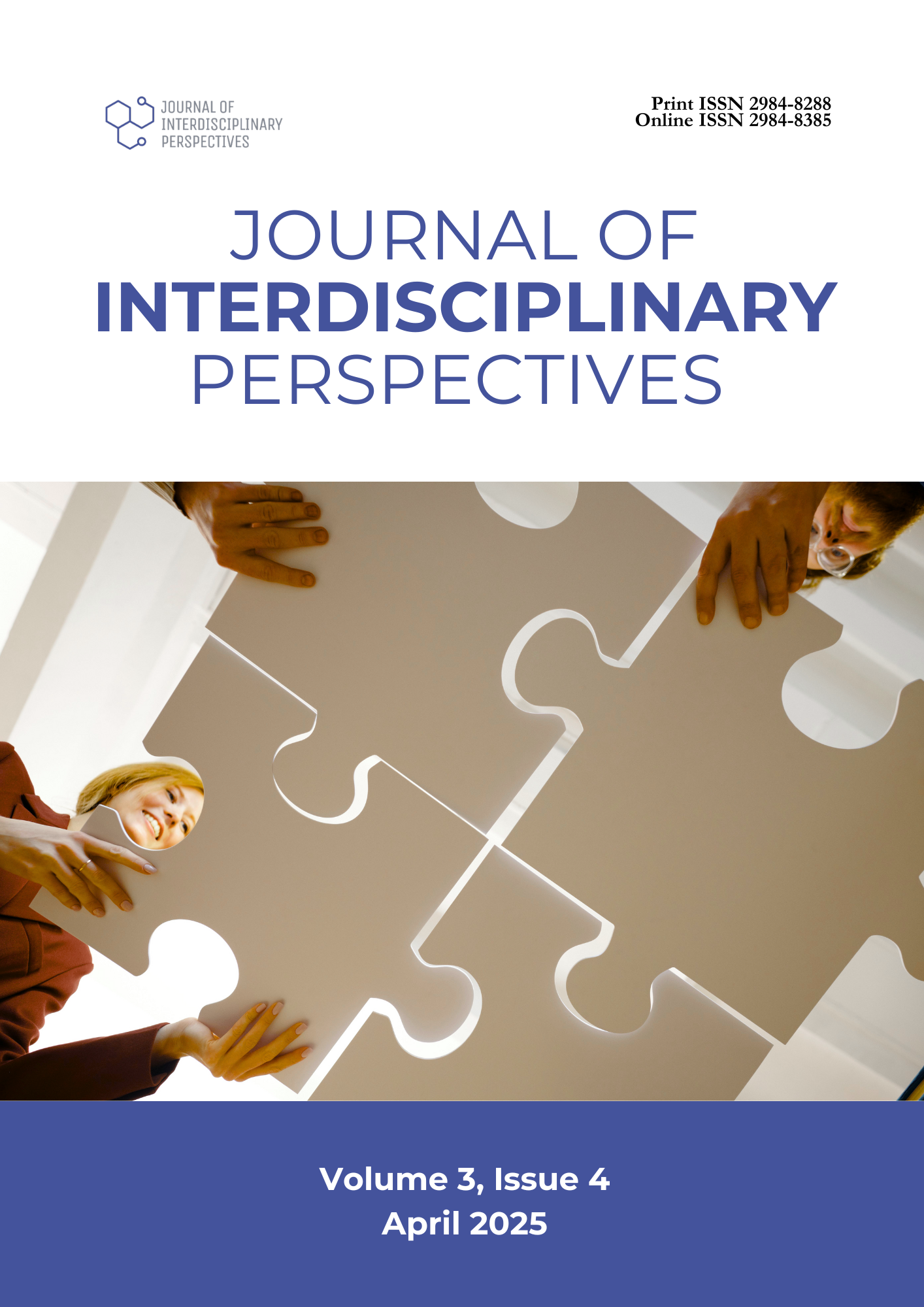Local Production Techniques and Sensory Evaluation of Cassava Wine
DOI:
https://doi.org/10.69569/jip.2025.090Keywords:
Product development, Cassava wine, Local production techniqueAbstract
This study aimed to develop a local production technique for cassava wine and evaluate its sensory acceptability across three treatments with varying cassava-to-yeast ratios: Treatment 1 (1 kg cassava, 50 g yeast), Treatment 2 (2 kg cassava, 50 g yeast), and Treatment 3 (3 kg cassava, 50 g yeast). Specifically, it assessed aroma, appearance, taste, texture, and respondents’ likelihood of consuming cassava wine compared to other options. A quantitative approach integrating descriptive and experimental methods was employed. Sensory evaluations, conducted using a hedonic scale, revealed distinct acceptability levels among the treatments. Treatment 1 received moderate ratings for appearance (40%) and high ratings for aroma (30%), with most respondents describing its taste as sweet with a mild alcoholic note. Treatment 2 garnered mixed feedback, with 50% moderately liking the appearance and 40% slightly liking the flavor. Treatment 3 achieved the highest overall acceptability, with 50% highly rating its appearance and 40% moderately appreciating its taste. Regarding consumption preference, 40% of respondents indicated a willingness to consume Treatment 3 regularly, a preference comparable to rice wine. The study highlights the potential of cassava wine, particularly the variant produced with 3 kg of cassava, as a viable alternative in local markets. Enhancing fermentation techniques, increasing consumer awareness, and promoting cassava wine could improve its acceptance and commercial viability.
Downloads
References
Aguiar, R. O., Carrera, A. G. P., Cunha, R. L., Oliveira, I. V. de, Silva, C. R. da, Silva, V. F. A., da Silva, J. N., da Silva, J. P., Carvalho, F. I. M., Martins, L. H. da S., Silva, P. A., & Moura, E. F. (2020). Optimization of the alcoholic concentration obtained from sugary cassava (Manihot esculenta Crantz) by response surface methodology. The Journal of Agricultural Science, 12(11), 157–168. https://doi.org/10.5539/JAS.V12N11P157
Andrés-Meza, P., Aguilar-Rivera, N., Meneses-Márquez, I., Del Rosario-Arellano, J. L., Bolio-López, G. I., & Leyva-Ovalle, O. R. (2024). Cassava cultivation; current and potential use of agroindustrial co-products. AIMS Environmental Science, 11(2), 248-278. https://doi.org/10.3934/environsci.2024012
Belda, I., Ruiz, J., Esteban-Fernández, A., Navascués, E., Marquina, D., Santos, A., & Moreno-Arribas, M. V. (2017). Microbial Contribution to Wine Aroma and Its Intended Use for Wine Quality Improvement. Molecules, 22(2), 189. https://doi.org/10.3390/molecules22020189
Brito, C., Pereira, S., Martins, S., Monteiro, A., Moutinho-Pereira, J. M., & Dinis, L. (2024). A review of strategies for achieving sustainable development goals across the wine chain.
Frontiers in Sustainable Food Systems, 8, 1437872. https://doi.org/10.3389/fsufs.2024.1437872
Chacón Mayorga, G. A., Arias Palma, G. B., Sandoval-Cañas, G. J., Ordoñez-Araque, R., & Ordoñez-Araque, R. (2021). Ancestral fermented indigenous beverages from South America made from cassava (Manihot esculenta). Food Science and Technology International, 41, 360–367. https://doi.org/10.1590/FST.15220
Coelho, E., Ballesteros, L. F., Domingues, L., Vilanova, M., & Teixeira, J. A. (2020). Production of a distilled spirit using cassava flour as raw material: Chemical characterization and sensory profile. Molecules, 25(14), 3228. https://doi.org/10.3390/molecules25143228
Hou, G. L., Ge, B., Sun, L. L., & Xing, K. X. (2020). A study on wine sensory evaluation by statistical analysis. Czech Journal of Food Sciences, 38, 1–10. Lambrechts, M.G., & Pretorius, I.S. (2019). Yeast and its importance to wine aroma – A review. South African Journal of Ecology and Viticulture, 21(1), 97-129.
https://doi.org/10.21548/21-1-3560
Lekics, V. (2021). Sustainable innovation in wine industry: A systematic review. Regional and Business Studies, 13(1), 55-73. https://doi.org/10.33568/rbs.2817
Mahapatra, S., Barbieri, P., & Rahimian, S. (2020). A content-analytic understanding of factors contributing to the success of proactive environmental strategy. The International Journal of Environmental Sustainability, 16(1), 1-28. https://doi.org/10.18848/2325-1077/CGP/v16i01/1-28
Marcon, M. J. A., Vieira, G. C. N., De Simas, K. N., Santos, K., Vieira, M. A., Amboni, R. D. de M. C., & Amante, E. R. (2007). Effect of the improved fermentation on physicochemical properties and sensorial acceptability of sour cassava starch. Brazilian Archives of Biology and Technology, 50(6), 1073–1081. https://doi.org/10.1590/S1516- 89132007000700018
Martínez-Falcó, J., Martínez-Falcó, J., Marco-Lajara, B., Sánchez-García, E., & Visser, G. (2023). Aligning the sustainable development goals in the wine industry: A bibliometric analysis.
Sustainability, 15(10), 8172. https://doi.org/10.3390/su15108172
Rofi’i, A., Purnomo, F. E., & Afriansyah, F. L. (2022). Pemodelan Matematika Fermentasi Alkohol Pada Tape Singkong Dengan Monitoring Technology Temperature And Fermentation Controlled Chamber (TFCC). Jurnal Ilmiah Inovasi, 22(3), 277–285. https://doi.org/10.25047/jii.v22i3.3509
Phakping, S., Ketudat-Cairns, M., & Boontawan, A. (2014). Extractive Fermentation of Ethanol from Fresh Cassava Roots Using Vacuum Fractionation Technique. Advanced Materials Research, 931–932, 1096–1100. https://doi.org/10.4028/www.scientific.net/amr.931-932.1096
Rebic, T., & Horska, E. (2018). Attributes of wine assessment. International Scientific Days Proceedings. https://doi.org/10.15414/isd2018.s2-3.07
Shahrajabian, N. (2023). Developing sustainable agriculture systems in medicinal and aromatic plant production using chitosan and chitin-based biostimulants. Plants, 12(13), 2469. https://doi.org/10.3390/plants12132469
Sobowale, S., Olatidoye, O., Animashaun, H., & Odunmbaku, L. (2022). Production and comparative assessment of alcoholic drinks produced from cassava, maize, and plantain flour using locally produced and imported enzymes. Food and Environment Safety, 20(4), 360-370. https://doi.org/10.4316/fens.2021.038
Stanco, M., Lerro, M., & Marotta, G. (2020). Consumers’ Preferences for Wine Attributes: A Best-Worst Scaling Analysis. Sustainability, 12(7), 2819. https://doi.org/10.3390/su12072819 Wagner, M., Stanbury, P., Dietrich, T., Döring, J., Ewert, J., Foerster, C., Freund, M., Friedel, M., Kammann, C., Koch, M., Owtram, T., Schultz, H. R., Voss-Fels, K., & Hanf, J. (2023).
Developing a sustainability vision for the global wine industry. Sustainability, 15(13), 10487. https://doi.org/10.3390/su151310487
Williamson, P.O., Mueller-Loose, S., Lockshin, L. and Francis, I.L. (2018), More hawthorn and less dried longan: the role of information and taste on red wine consumer preferences in China. Australian Journal of Grape and Wine Research, 24, 113-124. https://doi.org/10.1111/ajgw.12309
Tomlins, K. I., Sanni, L. O., Oyewole, O. B., Dipeolu, A. O., Ayinde, I., Adebayo, K., & Westby, A. (2007). Consumer acceptability and sensory evaluation of a fermented cassava product (Nigerian fufu). Journal of the Science of Food and Agriculture, 87(10), 1949–1956. https://doi.org/10.1002/JSFA.2941
Downloads
Published
How to Cite
Issue
Section
License
Copyright (c) 2025 Journal of Interdisciplinary Perspectives

This work is licensed under a Creative Commons Attribution-NonCommercial 4.0 International License.









